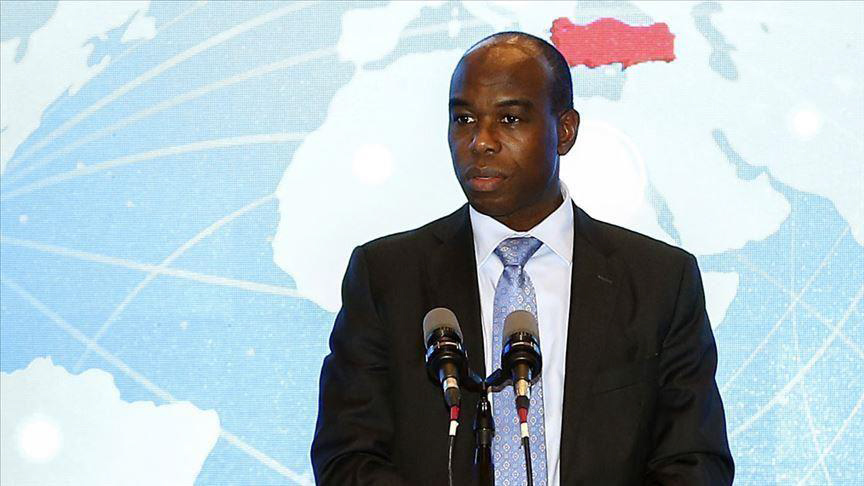World Bank: India Development Update
The Indian economy continues to grow at a healthy pace despite challenging global conditions-World Bank
By R Anil Kumar
-
India’s Economy to Remain Strong Despite Subdued Global Growth
-
The Indian economy continues to grow at a healthy pace despite challenging global conditions: World Bank
-
The narrowing of the current account deficit and strong foreign portfolio investment inflows, foreign exchange reserves reached an all-time high of $670.1 billion in early August, equivalent to over 11 months oft cover (in FY23/24 import terms)
-
Greater openness to trade will be key to reaching $1 trillion merchandise exports by 2030

World Bank, September 3. The Indian economy continues to grow at a healthy pace despite challenging global conditions, according to World Bank’s latest India Development Update. India’s Trade Opportunities in a Changing Global Context. But to reach its $1 trillion merchandise exports goal by 2030, India needs to diversify its export basket and leverage global value chains.
The India Development Update (IDU) observes that India remained the fastest-growing major economy and grew at a rapid clip of 8.2 percent in FY23/24. Growth was boosted by public infrastructure investment and an upswing in household investments in real estate.
On the supply side, it was supported by a buoyant manufacturing sector, which grew by 9.9 percent, and resilient services activity, which compensated for underperformance in agriculture. Reflecting these trends, urban unemployment has improved gradually since the pandemic, especially for female workers.
Female urban unemployment fell to 8.5 percent in early FY24/25. With a narrowing of the current account deficit and strong foreign portfolio investment inflows, foreign exchange reserves reached an all-time high of $670.1 billion in early August, equivalent to over 11 months oft cover (in FY23/24 import terms).

Amid challenging external conditions, the World Bank expects India’s medium-term outlook to remain positive. Growth is forecast to reach 7 percent in FY24/25 and remain strong in FY25/26 and FY26/27. With robust revenue growth and further fiscal consolidation, the debt-to-GDP ratio is projected to decline from 83.9 percent in FY23/24 to 82 percent by FY26/27. the current account deficit is expected to remain at around 1-1.6 percent of GDP up to FY26/27.
The IDU also highlights the critical role of trade for boosting growth. The global trade landscape has witnessed increased protectionism in recent years. The post pandemic reconfiguration of global value chains, triggered by the pandemic, has created opportunities for India.
The report emphasizes that India has boosted its competitiveness through the National Logistics Policy and digital initiatives that are reducing trade costs. However, it also notes that tariff and non-tariff barriers have increased and could limit the potential for trade focused investments.
“India’s robust growth prospects along with declining inflation will help to reduce extreme poverty,” said Auguste Tano Kouame, World Bank’s Country Director in India. “India can boost its growth further by harnessing its global trade potential. In addition to IT, business services and pharma where it excels, India can diversify its export basket with increased exports in textiles, apparel, and footwear sectors, as well as electronics and green technology products.”

The IDU recommends a three-pronged approach towards achieving the $1 trillion merchandise export target by reducing trade costs further, lowering trade barriers, and deepening trade integration.
“To create more trade-related jobs, India can Integrate more deeply into global value chains which will also create opportunities for innovation and productivity growth.”
| Indicator
(percent y-o-y growth, unless otherwise specified) |
FY22/23 | FY23/24e | FY24/25f | FY25/26f | FY26/27f |
| Real GDP Growth at constant market prices | 7.0 | 8.2 | 7.0 | 6.7 | 6.7 |
| Private Consumption | 6.8 | 4.0 | 5.7 | 6.0 | 6.1 |
| Government Consumption | 9.0 | 2.5 | 4.3 | 5.0 | 5.0 |
| Gross Fixed Capital Formation | 6.6 | 9.0 | 7.8 | 7.7 | 7.7 |
| Exports, Goods and Services | 13.4 | 2.6 | 7.2 | 7.2 | 7.9 |
| Imports, Goods and Services | 10.6 | 10.9 | 4.1 | 6.3 | 7.3 |
| Real GDP Growth, at constant factor prices | 6.7 | 7.2 | 7.0 | 6.7 | 6.7 |
| Agriculture | 4.7 | 1.4 | 4.1 | 3.9 | 3.7 |
| Industry | 2.1 | 9.5 | 7.6 | 7.3 | 7.2 |
| Services | 10.0 | 7.6 | 7.4 | 7.1 | 7.1 |
| Inflation (Consumer Price Index) | 6.7 | 5.4 | 4.5 | 4.1 | 4.0 |
| Current Account Balance
(percent of GDP) |
-2.0 | -0.7 | -1.1 | -1.2 | -1.6 |
| Net Foreign Direct Investment
(percent of GDP) |
0.8 | 0.3 | 1.0 | 1.2 | 1.5 |
| Fiscal Balance (percent of GDP) | -9.6 | -8.5 | -7.8 | -7.5 | -7.3 |
| Debt (percent of GDP) | 82.5 | 83.9 | 83.7 | 83.0 | 82.0 |
| Primary Balance (percent of GDP) | -4.0 | -3.1 | -2.5 | -2.3 | -2.2 |
(Table Source: World Bank)





